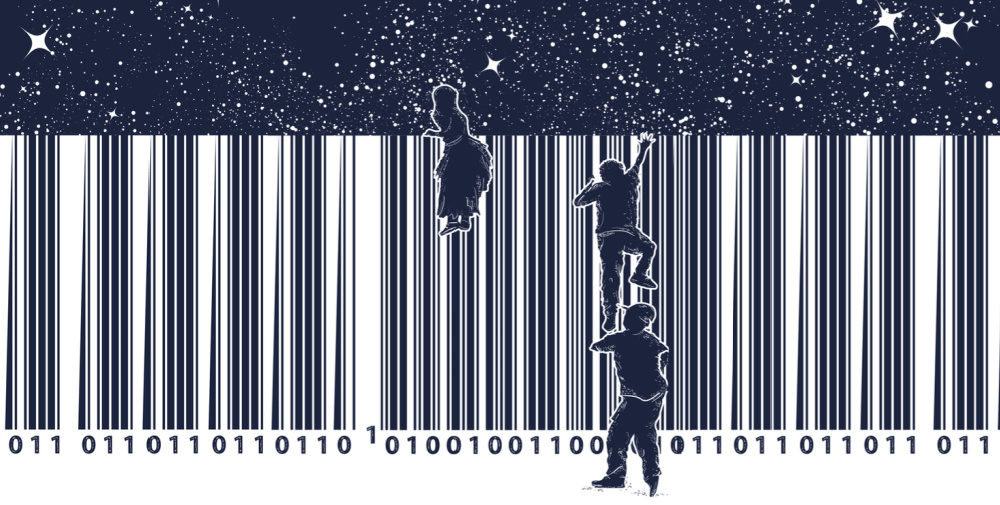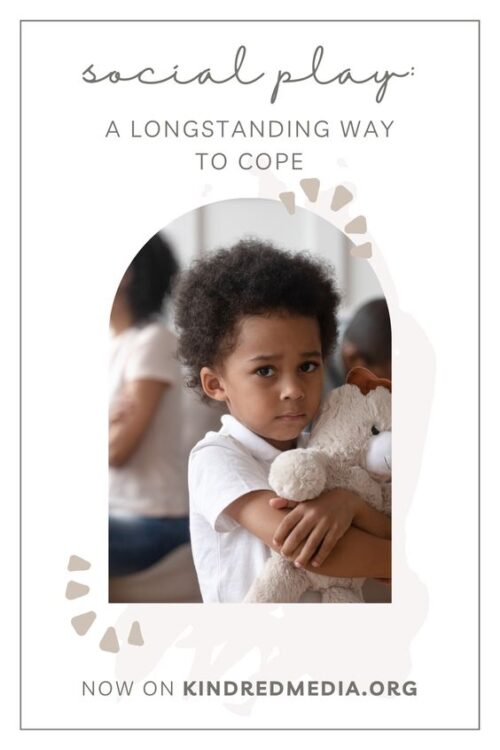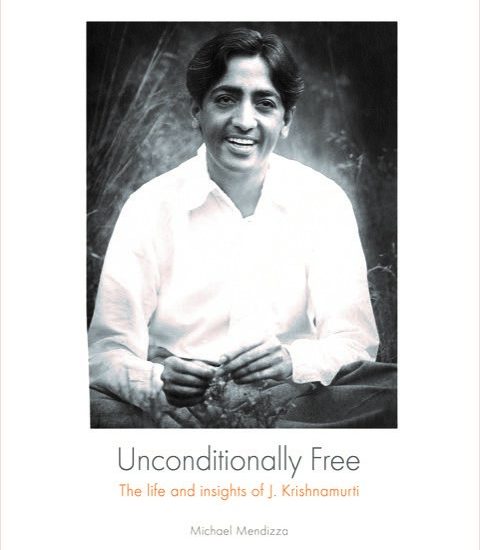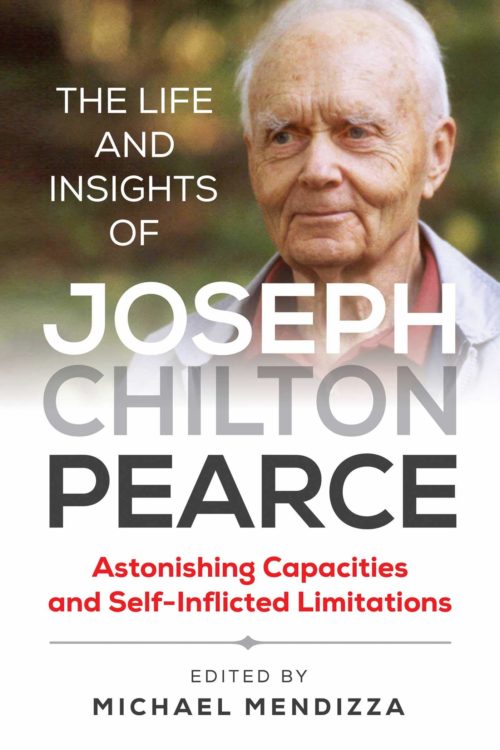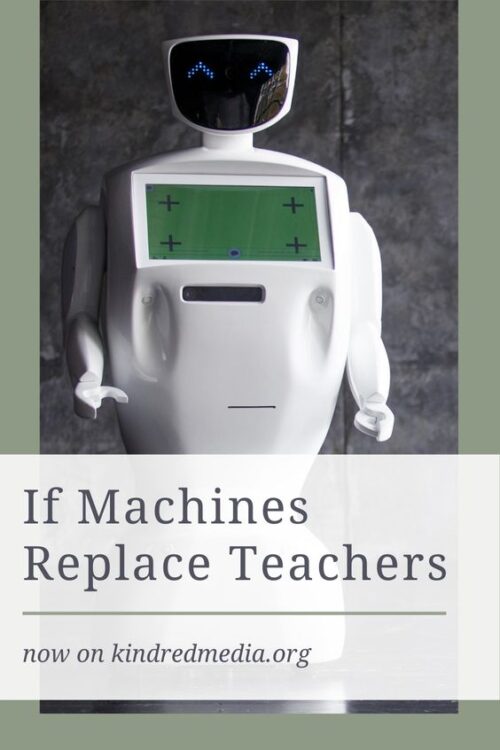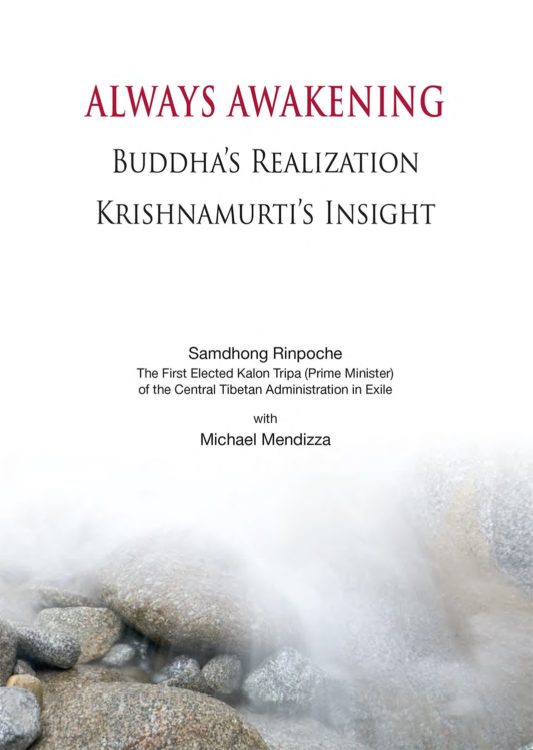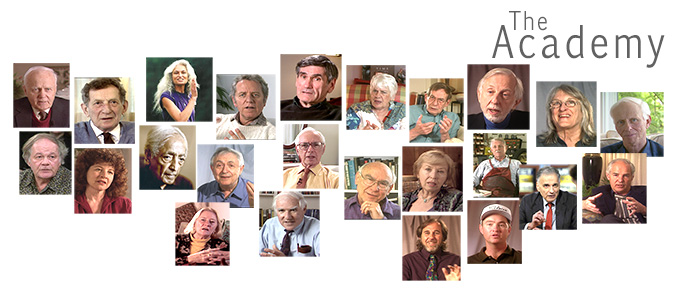A Sustainable Identity For Humanity
“We are faced with a breakdown of general social order and human values that threatens stability throughout the world. Existing knowledge cannot meet this challenge. Something much deeper is needed, a completely new approach. I am suggesting that the very means by which we try to solve our problems is the problem. The source of our problems is within the structure of thought itself.” – David Bohm
Appreciating David’s insight, it is clear that our approaches to parenting, schooling, higher education, organized religions, the corporate and private sector, none of these are preparing this most threatened generation in human history to meet the personal, social and ecological challenges they will face. What is the something much deeper, a completely new approach? Holding that question I penned a collection of essays; Where do we go from here? The preface begins:
There is an urgent need to rebrand humanity
Updating or changing the identity that defines the experience we call humanity, the process of creating meaning that identifies who we are as a species, our authentic nature, core values, purpose, the behaviors and activities that define the life we share.
Joseph Chilton Pearce began his first groundbreaking book, The Crack in the Cosmic Egg:
A change of worldview can change the world viewed.
There is a relationship between what we think is out there in the world and what we experience as being out there. There is a way in which the energy of thought and the energy of matter modify each other and interrelate. A kind of thought-mirroring takes place between our mind and our reality.
The Cosmic Egg is an ancient Vedic image (1500–500 BCE), for what Pearce called our self-world-view, or simply identity. Joe’s radical insight is that our identity is both reality shaping and defining. The essence of the Buddhist tradition, 5th or 4th century BCE, rests on this same theme:
“Our tacit acceptance of things as they seem is called ignorance, which is not just a lack of knowledge about how people and things actually exist but an active mistaking of their fundamental nature. True self-knowledge involves exposing and facing misconceptions about ourselves. The aim here is to find out how we get ourselves into trouble, then learn how to intervene on the ground floor of our counterproductive ideas. the Dalai Lama’s central theme is that our skewed perceptions of body and mind lead to disastrous mistakes, ranging from lust at the one extreme to raging hatred at the other (including environmental destruction*) so that we are consistently being led into trouble as if pulled by a ring in our nose.”
His Holiness The Dalai Lama,
How to See Yourself as You Really Are: A Practical Guide to Self-Knowledge (Abridged)
From the Foreword by Jeffery Hopkins, Translator
* See Our Only Home: A Climate Appeal To the World.
Attention is primary. Like a crystal lens, attention absorbs and becomes what it attends. The enchanting power of imagination and implicit absorption in falsely reified mental images dominate human consciousness, extinguishing our deeper nature. But not always. There are cracks in our cosmic egg.
Original play researcher O. Fred Donaldson, PhD, observes; “when I play, Fred disappears.” J. Krishnamurti notes; “with complete attention there is no observer.” In Mihaly Csikszentmihalyi’s words, Flow is “a state in which people are so involved in an activity that nothing else seems to matter; the experience is so enjoyable that people will continue to do it even at great cost, for the sheer sake of doing it.” So involved means complete attention. Authentic play is completely engaging. The intense and direct experience Krishnamurti describes involves complete attention. Like the blind men and the elephant, each is describing the same optimum state for learning and performance. Plant this highly sensitive and aware state in nature and what happens? We discover a new identity. A change of worldview changes the world viewed.
Responding to my writings, a colleague recommended Rediscovering a Sense of the Sacred, by Carolyn W. Toben, on her close relationship with Thomas Berry. As you will see, Thomas, in his own words, describes what must be done, a completely new approach.
Thomas Berry’s inspiration seemed to come from a contemplative mind supported by an analytical mind… I wondered how we on this earth could carelessly participate in the present ‘extinction spasm’ of our times? Surely it is a time for us to awaken in all our complexity and unity to see that we are one single earth community that lives or dies together…. Being with Thomas, a sense of the unity of all things began a shift of consciousness within me that would evolve through the rest of my life and led to the birth of a work for children.” Carolyn W. Toben
Thomas Berry, CP, PhD was a cultural historian and scholar of the world’s religions, especially Asian traditions. Berry believed that humanity, after generations spent in despoiling the planet, is poised to embrace a new role as a vital part of a larger, Interdependent-Earth-Community, consisting of a “communion of subjects not a collection of objects.” He felt that humanity is at critical turning point, entering into a new evolutionary phase that would be characterized either by mutually-enhancing Human-Earth relations, or where we and nature are dominated by exploitive technology.
A contemplative mind supported by an analytical mind, describes my forty-year relationship with J. Krishnamurti. Part of this tenure includes over one-hundred interviews with those close to Krishnamurti, including Samdhong Rinpoche, one of the Dalai Lama’s closest colleagues. Published in Always Awakening, Buddha’s Realization Krishnamurti’s Insight Rinpoche notes; there is only one enlightenment. All who realize this state experience or perceive the same reality. The manner in which each describes this reality, however, is unique, given the time, culture and the disposition of the audience.
Thomas Berry and Krishnamurti used different words and metaphors to describe, what I believe is, a common experience or state. What follows in an interplay of Berry’s insights, abridged from Rediscovering a Sense of the Sacred, by Carolyn W. Toben, and other writings, with rare descriptions of Krishnamurti’s inner experience drawn from his Notebook, The Only Revolution, This Marvelous Earth, along with other sources.
Both distinguish between the subjective, contemplative mind and the analytical mind. Joseph Chilton Pearce referred to this difference as intellect and the intelligence of the heart. Buddhists and Krishnamurti describe the absolute and the relative realities, thought, and fully awake-sensitive-empathic silence. All agree that intellect is a relative, limited and often sell-deceptive form of intelligence.
Which mind or state is the default for humanity? Intellect or Intelligence?
That is the question, appreciating that this default state becomes the source of our identity, identity being reality shaping and defining. As technology, which is dead, tightens its grip and infects more and more of our children’s experience, we need to find a way to ground child development in humanity’s true, natural intelligence, and from this, develop imagination and intellect as tools that serve that implicit wholeness. Indigenous traditions were planted in nature. We are not. Our core, reality shaping identity, is mechanical, not living. Krishnamurti, and I suggest Thomas Berry, lived in a different state of wholeness. Our challenge is to discover ways to lead children, at every age and stage, by modeling a mindful-subjective-contemplative, highly awake and sensitive state, where nature speaks, resonates and awakens every child’s authentic nature – which is nature. If not you and I, then who?
Descartes took the soul out of the universe and I am determined to bring it back in. The removal of the soul (our subjective experience), began with the mechanistic trend of the modern world which has led to the loneliness of living in a world where the sacred is banished. We gave away our subjectivity, our very souls, to the objective reasoning mind. We conspired in our own diminishment in agreeing to live a divided life when interiority, or subjectivity got lost in the process of progress. We restore ourselves through our awareness.
“As technology, which is dead, tightens its grip and infects more and more of our children’s experience, we need to find a way to ground child development in humanity’s true, natural intelligence, and from this, develop imagination and intellect as tools that serve that implicit wholeness. Indigenous traditions were planted in nature. We are not.”
– MICHAEL MENDIZZA
We have to awaken specific human faculties in our deeper capacities; we have more profound dimensions than we realize. We cannot endure living on the earth without a sacred context. Earth gives unique expression of itself in its rocks and crystalline structures, and in the variety and splendor of living forms, until humans appear as the moment in which the unfolding universe becomes conscious of itself. The human emerges not only as an Earthling, but also as a Worldling. We bear the universe in our beings as the universe bears us in its being. The two have a total presence to each other and to that deeper mystery out of which both the universe and ourselves emerged… Because we are moving into a new mythic age, it is little wonder that a kind of mutation of what it is to be human emerges…
“This is what is so exciting, yet so painful and so disrupting. One aspect of this change involves the shift in Earth—human relations, for we now in large measure determine the Earth process that once determined us. In a more integral way, we could say that the planet Earth that controlled itself directly in the former period now to an extensive degree controls itself through us.” – Thomas Berry
“I could feel the wind passing through the trees, and the little ant on the blade of grass. I could feel the birds, the dust, and every noise was a part of me. I was in everything, or rather everything was in me. I was supremely happy for I had seen. Nothing could ever be the same.” – Krishnamurti
“If you have no relationship with nature you have no relationship with man. Nature is the meadows, the groves, the rivers, all the marvelous earth, the trees, and the beauty of the earth. If we have no relationship with that, we shall have no relationship with each other… One may be surrounded by great beauty, by mountains and fields and rivers, but unless one is alive to it all one might just as well be dead.” – Krishnamurti
The human is neither an addendum nor an intrusion into the universe. We are quintessentially integral with the universe… The task in shaping a new future calls upon us to be in union, not just with our rational facility, but also with the deeper (subjective) structures of the reality of the soul that allows us to be truly present to the natural world. Subjective communion with the earth overcomes it analytical, mechanistic aspects.
“The work now is in the realm of immanence (the divine encompasses or is manifested in the material world). What is being lost today in western civilization is the development of soul or subjective capacities. Which can lead us to our primary source of understanding within the mind, the imagination, and the emotions. The human-earth relationship can teach us to recover these though our unique human ability to reflect on the magnificence of a sunrise, the miracle of a humming bird, the profusion of blossoming flowers, the awesome sight of a waterfall, the lightning and thunder of great storms. Through these outer experiences comes the development of our inner development, and our creativity.” – Thomas Berry
“Quietly, it came, so gently that one was not aware of it, so close to the earth, among the flowers. It was spreading, covering the earth and one was in it, not as an observer, but of it. There was no thought or feeling, the brain utterly quiet. Suddenly there was innocence so simple, so clear and delicate. It was a meadow of innocence past all pleasure and ache, beyond all torture of hope and despair. It was there and it made the mind, one’s whole being innocent, one was of it, past measure, past word, the mind transparent and the brain young without time. – Krishnamurti’s Notebook
The earth is a single community that lives or dies together. The human-earth relationship is the primary experience of the Divine. We are touched by what we touch; we are shaped by what we shape. We are enhanced by what we enhance. We must remember what has been forgotten; the inner life of humans and the outer world of the natural world. The two go together. The natural world activates the spirit in our minds. We have a natural bond of intimacy with the natural world; something in us goes out to meet every living thing. And we establish a relationship with the natural world instead of an identity over and against it, which separates the part from the whole. We recover intimate modes of Divine presence. We recover our souls.
“We discover our fulfillment in those deeper moments in which we feel our oneness with the universe. In those moments we feel the intimacy, the unity of our relationship to all things and to the Divine. The sense of the sacred is at the heart of it all. The sacred is that which evokes wonder, the natural world is that mysterious presence that we refer to as the Divine. We find it as we celebrate the wonder of existence in the dawn, in the midday, in the closing of the day, in acknowledging the water, wind, earth, trees. We find it as we stop and experience the full depth of the natural world as we look at it, listen to it, feel it, in the numinous moments in which, through our intuitive awareness, we come into its mystery. We enter into hidden realms of the natural world and they enter into us.” – Thomas Berry
In these evolutionary times there is an ever-increasing awakening of interior consciousness. A reversal has begun as the interior, subjective, spiritual dimension of the entire cosmic order is being integrated as the basic foundation of the new sacred story.
– THOMAS BERRY
“Dawn wouldn’t come for a couple of hours, on waking, with eyes that have lost their sleep, one was aware of an unfathomable cheerfulness; there was no cause to it, no sentimentality or that emotional extravagance, enthusiasm, behind it; it was clear, simple cheer, uncontaminated and rich, untouched and pure.
“There was no thought or reason behind it and neither could one ever understand it, for there was no cause to it. This cheerfulness was pouring out of one’s whole being and the being was utterly empty. As a stream of water gushes out from the side of a mountain, naturally and under pressure, this cheer was pouring out in great abundance, coming from nowhere and going nowhere, but the heart and mind would never be the same again.” – Krishnamurti’s Notebook
Understanding and appreciation are activated within us which take us to the world of the sacred. That is what we have forgotten; that is what we must remember. Only a sense of the sacred can save us. It has been said; “we protect what we love.” (Jacques-Yves Cousteau). I add, “we only love what we regard as sacred.”
In Confucianism there is a concept known as Jen (pronounced Ren), which is a way of speaking of qualities latent in the depths of oneself; it is a special way of feeling, of sympathetic communion. A compassion arises from our basic tendencies of our hearts as we journey into the center of our being where Love resides. We discover that we have within us a heavenly-endowed nature in the process, ‘shoots of goodness,’ I call them, that need cultivation. We have a basic drive towards goodness and Life itself that need to be acknowledged. Everyone has the capacity for it. But it must be cultivated.
“The first thing is to become aware outside oneself. We need instructions in the otherness of existence. The human and the natural world come together in a special way in which the universe is present in a moment of epiphany. The sense of the sacred affixes within us in response to the natural world. It is all there in a unity that is different for everyone. The Divine is present at every moment. In the sacred all opposites are reconciled.” – Thomas Berry
“It was snowing that morning. A bitter wind was blowing, and the movement upon the trees was a cry for spring. In that light, the trunks of the large beech and the elm had that peculiar quality of grey-green that one finds in old woods where the earth is soft and covered with autumn leaves. Walking among them you had the feeling of the wood – not of the separate individual trees with their particular shapes and forms – but rather of the entire quality of all the trees. – Krishnamurti
“Nature is part of our life. We grew out of the seed, the earth, and we are part of all that, but we are rapidly losing the sense that we are animals like the others. Can you have a feeling for a tree, look at it, see the beauty of it, listen to the sound it makes? Can you be sensitive to the little plant, a little weed, to that creeper growing up the wall, to the light on the leaves and the many shadows? One must be aware of all this and have that sense of communion with nature around you. You may live in a town, but you do have trees here and there. A flower in the next garden may be ill-kept, crowded with weeds, but look at it, feel that you are part of all that, part of all living things. If you hurt nature, you are hurting yourself.” – Krishnamurti
A compassion arises from our basic tendencies of our hearts as we journey into the center of our being where Love resides. We discover that we have within us a heavenly-endowed nature in the process, ‘shoots of goodness,’ I call them, that need cultivation. We have a basic drive towards goodness and Life itself that need to be acknowledged. Everyone has the capacity for it. But it must be cultivated.
– MICHAEL MENDIZZA
We have had little attraction toward a shared communion existence within the greater world of living forms. We hardly think of ourselves within a multi-species community.
But we are ready to receive the cosmos now because of the desperation of our situation, the loss of animals and plants and aspects of the universe… The earth been seen as a collection of objects to be used instead of a communion of subjects of which we are all a part.
As we shift to identifying ourselves with one another, as part of a total earth community that includes all living forms, our actions change in alignment with our new understanding. The whole sacred universe as one single coherent community with all elements in total interdependence with one another; every human, creature, tree, plant and star unique, and each with its place with the whole with a particular function to perform that all others depend upon.
(Waving his arm towards the woods) “We are actually in a mystical rapport with these budding trees, the song birds, the graciousness of this sun, the amazing diversity of it all, but we need to acknowledge the sacredness of our relationship, our communion with the earth, the universe and the Divine.” – Thomas Berry
“Be in communion with nature, not verbally caught in the description of it, but be a part of it, be aware, feel that you belong to all that, be able to have love for all that, to admire a deer, the lizard on the wall, that broken branch lying on the ground.
“Look at the evening star or the new moon without the word, without merely saying how beautiful it is and turning your back on it, attracted by something else, but watch that single star and new delicate moon as though for the first time. If there is such communion between you and nature, you can commune with man, with the boy sitting next to you, with your educator or with your parents. We have lost all sense of relationship in which there is not only a verbal statement of affection and concern but also this sense of communion, which is not verbal. It is a sense that we are all together, that we are all human beings, not divided, not broken up, not belonging to any group or race or some idealistic concepts, but that we are all human beings, living on this extraordinary, beautiful earth. – Krishnamurti
The scientific story must be accompanied by a spiritual story, for we have become strangers to the natural world except in a scientific way. Through literal thinking we lose a sense of the sacred, but we also lose a sense of the universe… Words of love, beauty, wonder, and goodness are not scientific words. Scientific words are ways of analyzing and lead to using the earth as a resource, which has become our ultimate judgment. Science needs to function within a cosmology, not as if it is a cosmology.
Subjectivity helps us understand that every being has its own interior, its own mystery, its numinous aspect, ‘the authenticity at the heart of every being,’ as it is said in Confucianism. It is this interiority that attunes us to the deeper mystery of things and opens us to the sacred presence within each reality of the universe. This is the understanding that was lost in the process of progress, and the vast mythic, symbolic world with all its pervasive numinous qualities was also nearly lost entirely.
(Numinous is a term derived from the Latin numen, meaning “arousing spiritual or religious emotion; mysterious or awe-inspiring.”) “In these evolutionary times there is an ever-increasing awakening of interior consciousness. A reversal has begun as the interior, subjective, spiritual dimension of the entire cosmic order is being integrated as the basic foundation of the new sacred story.” – Thomas Berry
“Have you ever woken up in the morning and looked out of the window, or gone out on the terrace and looked at the trees and the spring dawn? Live with it. Listen to all the sounds, to the whisper, the slight breeze among the leaves. See the light on that leaf and watch the sun coming over the hill, over the meadow. And the dry river, or that animal grazing and those sheep across the hill, watch them. Look at them with a sense of affection and care, that you do not want to hurt a thing. When you have such communion with nature, your relationship with another becomes simple, clear, without conflict.” – Krishnamurti
First we must be in communion with our own deeper interior subjective selves, the with the larger community of life, and the universal order of things. Bonding, then refers not just to the physical, but to the natural spiritual bond of intimacy we feel with all living forms that is mystical and covenantal (the theological concept of a covenant, ‘agreement’, as an organizing principle for Christian theology). We are not ourselves without everything and everyone else.
For subjectivity, one must first acquire the capacity for interior presence to oneself. Through contemplation of one’s own being to deepen one’s personal sacred center. This becomes the deepening of the capacity for communion with all things. Through this practice, we acknowledge that we are an integral part of the universe. We then begin to see, to awaken to the universe in all its magnificent differentiations and a new consciousness comes with an understanding of the depth and diversity of everything. We become truly present to other modes of being.
“As we practice this way of seeing, we come into a mutually enhancing relationship with everything and everyone that strengthens the individual through the distinctive quality of things that brings about communion. This creates a deep bond of intimacy that is invisible but knowable, a presence that is palpable.” – Thomas Berry
“Because we do not love the earth and the things of the earth but merely utilize them, we are insensitive to the beauty of a waterfall and have lost the touch of life. We don’t sit with our backs against the trunk of a tree. And since we do not love nature, we do not know how to love human beings. We have lost the sense of tenderness, that sensitivity, that response to things of beauty. It is only in the renewal of that sensitivity that we can have understanding of what is true relationship. That sensitivity does not come in the mere hanging of a few pictures, or in painting a tree, or putting flowers in your hair; sensitivity comes only when this utilitarian outlook is put aside.” – Krishnamurti
Subjectivity and differentiation (diversity) are fulfilled in communion. By enlarging our hearts and minds to include every living thing, we participate in the functioning of the universe and the Divine order of things with deeper and deeper intimacy. It is our destiny now in the twenty-first century to develop this capacity of communion on new and more comprehensive levels. We are being changed. We are being transformed to see everything in its true proportions. We are being driven down to the heart with its radical interior tendencies.
From the earth we learn to understand the presence of all things to each other and this changes our human relationships. Learning to appreciate the universe is the key to all knowledge because it constitutes an approach to everything. We are here to become integral with all our relations. Our role and mission is to be in communion with all living forms; both human and non-human.
“Man has killed millions of whales and is still killing them. All that we derive from their slaughter can be had through other means. But apparently man loves to kill things: the fleeting deer, the marvelous gazelle, and the great elephant. We love to kill each other. This killing of other human beings has never stopped throughout the history of man’s life on this earth. If we could, and we must, establish a deep, long abiding relationship with nature -with the actual trees, the bushes, the flowers, the grass, and the fast moving clouds – then we would never slaughter another human being for any reason whatsoever.” –Krishnamurti
Someone or something must ignite that spark by loving the differences in each of us. In each meeting there is the mystery of the presence of another with whom one can discover new possibilities for life. Everyone and everything calls for recognition, the longing to be known for its special presence. To deprive any being of this sacred quality (of recognition) is to disrupt the total order of the universe.
We depend upon others to give us ourselves by seeing our greater selves and bringing them forth through our relationship with them. We actually activate the sacred by recognizing it. There is a need for greater interior development of this value to be realized so we can nurture one another’s journey toward fulfillment. People need to have constant renewal of their bonding with one another.
With communion, life is activated, universal presence to all things is established, a mutual indwelling occurs, which attracts all things and establishes order in the universe.
“When this is remembered it brings unity; a sense of mutual presence arises. We have a natural bond of intimacy with all living forms which must be recovered at this convulsive moment in history to which we are awakening.” – Thomas Berry
“We have so little relationship with nature, with the insects and the leaping frog and the owl that hoots among the hills, calling for its mate. We never seem to have a feeling for all living things on the earth. If we could establish a deep abiding relationship with nature, we would never kill an animal for our appetite; we would never harm, vivisect, a monkey, a dog, a guinea pig for our benefit. We would find other ways to heal our wounds and our bodies. But the healing of the mind is something totally different.
“That healing gradually takes place if you are with nature, with that orange on the tree and the blade of grass that pushes through the cement, and the hills covered, hidden, by the clouds.” – Krishnamurti
Thomas was moving us out of our entrapment for the past centuries in which the language of the mechanical, the industrial and the technological had kept us in bondage. As he brought matter and spirit together, a leap in consciousness was taking place. New understanding was being born.
In the weeks that followed our meeting, I started practicing the inward and outward journeys of subjectivity, differentiation and communion to develop an understanding out of my own experience. I practiced a morning meditation that began with an awareness of the rising sun followed by the rising mists over the pond, and then sought to move downward into the ‘radical tendencies of the heart” to remember the Divine purposefulness that brought forth all of life and to find stillness there.
The effort was towards a holding of the love that was there as an inner presence, and of being held in return… I began to really see the vast and infinite variety in patterns, colors, textures and the diversity of plants and creatures, and the one life force that we all shared in common. Thomas’ words that “subjectivity and differentiation are fulfilled in communion,” began to reveal themselves to me. I began to understand how we could see everything in its true proportion, by ”coming into a bond of intimacy with the universe.“ Love as an inner presence to all things was the interior binding force of the universe that holds all thing together. It is still speaking to us as it had since the beginning of the mysterious long and slow evolutionary process with life as its goal. Carolyn W. Toben
Where do we go from here?
A renewed, sustainable identity for what it means to be human.
It should be apparent that we are not who or what we think we are. 60,000 years ago or so, with the appearance of the neocortex and its astonishing capacity to create mental images not present to the senses, the core identity and therefore reality of human beings changed. Attention shifted from the primary sensory and emotional brain centers, which are millions of years older, to the abstracted and disembodied images of the new imaginative brain.
So powerful and enchanting were these new mental realms that we quickly lost track of what we were doing and began to mistake our new abstracted reality for the reality created by our primary brain centers. In the simplest of terms, memory, powered by imagination, created culture which dominated and displaced our true nature, which is nature, as the primary force that shapes our identity and its implicit reality.
As physicist David Bohm, J. Krishnamurti, Samdhong Rinpoche (one of the closest colleagues of his Holiness the Dalai Lama), Joseph Chilton Pearce and others insist, we must cultivate a quality of attention and therefore identity-reality that is free from our current enchantment. We must lift attention out of its embedment in image and concept. Only then can we use image and concept as the creative tools they are, without our identity-reality being defined by these tools. The fundamental error, being embedded in the tool (thought, image, concept), is that we mistake the tool for intelligence and project this same error on technology. Krishnamurti called this the Awakening of Intelligence.
For centuries monks of various religious orders, anchorites, contemplatives and seekers have pondered how they can liberate ‘themselves’ from this shared delusion, while ‘more of the same’ enslaved succeeding generations in delusion.
Firmly embedded in our cultural identity or ego, we try various techniques, therapies and practices to cope with the psyche’s response to the punishments and rewards implicit in culture. Like treading water, we remain stuck where we are investing tremendous energy and attention compensating. Compensating is not freedom. True freedom, liberation in the classic use of that term, is negating our identification with the structure that creates both culture and our personal ego. We have run out of time. The biosphere can no longer absorb our misguided folly. More of the same is suicidal.
Each of us must discover for ourselves that waking up from the dream is different than dreaming that we are awake. Upon this distinction our priority must be to lift ourselves and others out of our self-imposed enchantment, but more importantly, to find ways of not infecting our children in the very process that creates this near universal delusion. They, our children, are the ones that will save us from ourselves, or not. Our challenge is to rediscover, identify and express our true, authentic nature, which is nature, and with that redefine the experience we call humanity.
A Robust Immune System for The Psyche
When foreign organisms invade the body, it mounts a defense response that negates and flushes the predators out. We need to evolve an equally robust immune system for memes that invade the psyche. We need a second enlightenment. The first Enlightenment revealed the false beliefs such as superstitions and ushered in the scientific method. The second Enlightenment would reveal and negate the false beliefs we have about personal egos and culture.
Currently we assume that the tool, intellect and imagination, are intelligence. We need to evolve a deep and present experience that the mental images thought produces are images, tools, a form of play. Such an insight reveals the limitations of thought and imagination, no longer mistaking the abstractions produced as intelligence. Thought and imagination are understood and used as tools that serve wholeness, the vast, unknowable intelligence we call nature.
As Thomas Berry described:
From the earth we learn to understand the presence of all things to each other and this changes our human relationships. Learning to appreciate the universe is the key to all knowledge because it constitutes an approach to everything. We are touched by what we touch; we are shaped by what we shape. We are enhanced by what we enhance. We must remember what has been forgotten; the inner life of humans and the outer world of the natural world. The two go together. The natural world activates the spirt in our minds. We have a natural bond of intimacy with the natural world; something in us goes out to meet every living thing. And we establish a relationship with the natural world instead of an identity over and against it, which separates the part from the whole. We recover intimate modes of Divine presence. We recover our souls.
A Proposal – Discovering and Identifying with the Sky-Like Nature of Our Mind
From the above, it is being proposed that Thomas Berry and J. Krishnamurti shared a common state of perception-identity-reality, which then informed or guided cognitive intellect in daily life, expressing as continuous movement of wholeness. Further, and more importantly, they serve as contemporary models of a different state-of-being for the whole of humanity, in relationship to the natural world. In support of this proposal, the following describes three levels of consciousness found in classic Buddhism. Note the term, “pure attention.”
Krishnamurti described, “with complete attention there is no observer.” With complete attention conditioned thought and discursive memory are not active, but pure or “choiceless awareness,” is active, radiant, expansive and indeed, inherently aware. As Buddhist Monk, Mattheu Richards, described in The Quantum and the Lotus:
There is a fundamental quality of mind that is present at all times; the basic quality of knowing, of being aware. Without this cognitive quality, one cannot speak of a mind or consciousness. It is the mere fact of knowing that differentiates a conscious phenomenon from an unconscious one. Like a stone. In Buddhist terms, it is said that consciousness possesses a fundamental clarity of luminosity, opposite to the cognitive darkness of inanimate objects.
From an experiential perspective (the first person experience), consciousness can be considered as a primary phenomenon. It is needed for the arising of any thought, remains after a particular thought has vanished. It is the most fundamental aspect or nature of the mind. Pure consciousness knows itself, but not in a subject-object relationship. It is self-illuminating like the flame of a lamp that illuminates other objects, but does not need to illuminate itself, for light is its nature.
Buddhism distinguishes three levels of consciousness; gross, subtle, and extremely subtle. The first of these (gross), is the level of the biochemical working of the brain. The second is the subjective experience that we customarily call consciousness, that is to say the mind’s faculty to, among other things; examine itself, to ponder its own nature and exercise freedom of choice. The third level, that o the extremely subtle, which is the most important, is also called, “the fundamental luminosity of the mind.” This state is pure awareness that transcends the perceptions of a subject/object duality in the world and breaks free from the constraints and traps of discursive thought.
These three types are not separate streams of consciousness, but lie at different, increasingly deep levels… The brain, and in fact the whole body, even extending outside the body to the environment, provide gross and subtle consciousness with the conditions that allow them to manifest themselves. These levels of consciousness are both shaped and modified by the brain and environment, and can in turn modify the brain and body. The activities of these levels of consciousness are correlated to the brain and can’t manifest themselves without a body.
Fundamental consciousness (the extremely subtle) is quite different. In the tantras – Buddhism’s profoundest vision – fundamental consciousness is called ‘pure awareness’ (rigpa). This type of consciousness is always present behind the screen of thoughts. It allows all thoughts to arise but can be experienced in the absence of all mental constructs. It’s also called “the primordial continuity of the mind,” “natural luminosity,” “the ultimate nature of the mind,” “the natural state of consciousness,” “essential simplicity,” “primordial purity,” and spontaneous presence.”
In normal life, only the gross and subtle levels of consciousness can be discerned, because the fundamental level has been cloaked by the veil of ignorance, just as the sun can be momentarily covered by clouds. However, ignorance can no more affect the primordial nature of consciousness than clouds can affect the sun.
The fundamental level of consciousness cannot have arisen form inanimate matter, and it doesn’t necessarily always and in all context, depend on being embodied in a physical form.
The mind/matter dichotomy turns out to be another example of our attachment to solid reality and is just another concept… What’s more, the concept of the dichotomy between our inner self and the outside world leads to our inability to perceive the true nature of reality.
Sogyal Rinpoche in, The Tibetan Book of Living and Dying, shares another view:
Our true nature could be compared to the sky, and the confusion of the ordinary mind to clouds. Some days thesky is completely obscured by clouds.
So where exactly is this Buddha Nature? It is in the sky-like nature of our mind. Utterly open, free, andlimitless, it is fun, so simple and so natural that it can never be complicated, corrupted, or stained, so pure that it is beyond even the concept of purity and impurity. To talk of this nature of mind as sky-like, of course, isonly a metaphor that helps us to begin to imagine its all-embracing boundlessness; for the Buddha Nature has a quality the sky cannot have—that of the radiant clarity of awareness. As it is said: “It is simply your flawless, present awareness, cognizant and empty, naked and awake.”
Just as clouds can be shifted by a strong gust of wind to reveal the shining sun and wide-open sky, so, under certain special circumstances, some inspiration may uncover for us glimpses of this nature of mind. These glimpses have many depths and degrees, but each of them will bring some light of understanding, meaning, and freedom. This is because the nature of mind is the very root itself of understanding. In Tibetan we call it rigpa, a primordial, pure, pristineawareness that is at once intelligent, cognizant, radiant, and always awake.
Sogyal Rinpoche, The Tibetan Book of Living and Dying
Experienced through the human body, the true nature of reality and our entangled interdependence with all of nature is the common vision shared by Thomas Berry and Krishnamurti. We are that, cloaked however, by the veil of ignorance. Standing upon traditional forms, and yet going beyond, our challenge is to discover and design experiences that negate the veil, resetting the default-state of human consciousness to its true, fundamental level, modeled by adults during all stages of child-development, allowing children to imprint humanities’ true identity-reality without effort, as the absorbent mind imprints language.
Where do we go from here….
Post script
It is one thing to have the experience. It is another to describe and create the experiences that awaken it in others. That is our challenge.
Krishnamurti, and I presume that Thomas Berry, lived in a different default state of consciousness, with its implicit identity-reality. Like Edison and the electric light bulb, they pioneered the new paradigm, the new model. We don’t need to rediscover the light bulb, rather, our challenge is to see what they are modeling in and discover for ourselves, embrace and embody the new paradigm. Once we see, we see. It is so clear, obvious, looking out from within this new state, but oblique and invisible looking from outside in.
Our default reality is the thought realm; conditioned memory, comparison, shame, ego-culture, dominated by imaginary intellect. As Krishnamurti notes, this identity-reality is forever limited. Vast, immeasurable, spontaneous creative-intelligence (creation) is excluded. We identify and live in the limited, conflict ridden state where our imagined intellect is reality. From this POV imagined intellect is sanity, as embodied by Victor Frankenstein and his contemporary peers. But like machine learning (AI) – data is dead. A reality-identity grounded in dead-data kills.
A new ground must be established, a new default identity-reality state, and from this context, conditioned memory, intellect and ego-culture assumes its true and sane function. Without this new context, sanity is whatever is imagined. There is nothing else.
As described, a conditioned dead-data-based identity-reality is incapable of transforming itself. Something ‘other’ is needed, a completely new approach. For most of human history nature or ‘wildness’ provided the mirror. Today, we must find new and innovative ways to break the spell in parents, educators and childcare providers, so they model this shift in humanities default state. The next critical generations must imprint this new relationship between identity and intellect as spontaneously and without effort as they absorb and imprint the mother-language. We have no other choice.


